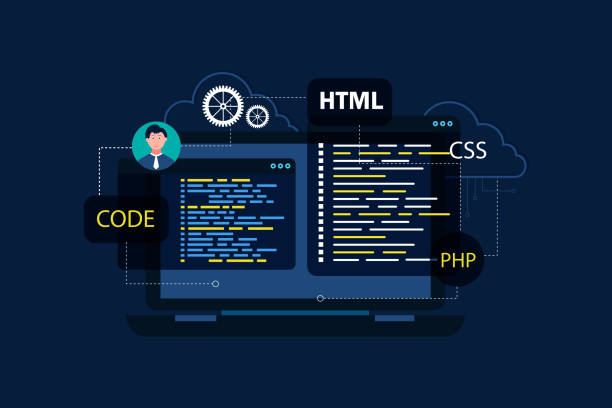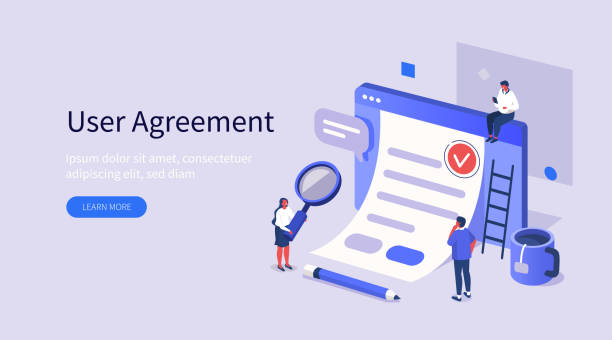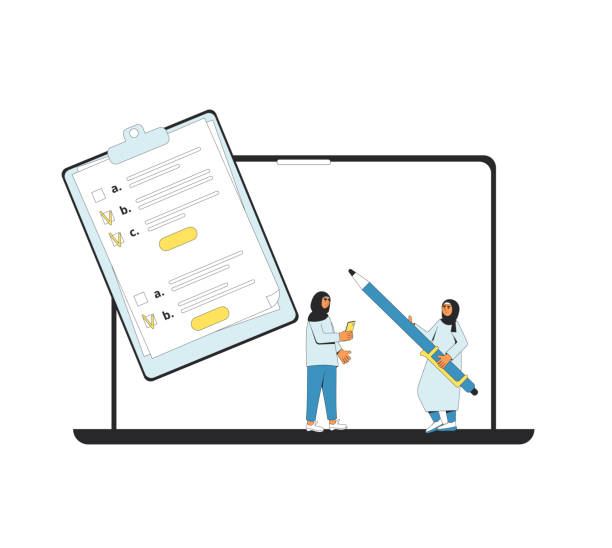An Introduction to the Critical Importance of Secure Website Design

In today’s world, where digital and physical boundaries are rapidly blurring, secure website design is not a choice, but an undeniable necessity.
Websites act as online gateways for businesses, organizations, and even individuals, and any intrusion or vulnerability in them can lead to irreparable consequences.
Loss of #user_data, financial exploitation, damage to #brand_reputation, and even complete operational shutdown are just some of the consequences of neglecting #cybersecurity.
An insecure website exposes users to various #cyber_attacks such as phishing, SQL injection, and XSS attacks.
This not only damages user trust but can also result in heavy legal penalties for website owners, especially given stringent data protection regulations like GDPR.
Therefore, the importance of high-security website design, right from the initial stages of ideation and development, is clear to everyone.
It is a long-term investment for data protection and preserving your digital credibility.
For a deeper understanding and comprehensive education in this field, one must delve into technical details and preventive solutions.
This section serves as an explanatory introduction, laying the groundwork for more specialized discussions on building a secure website and comprehensively elucidating its importance.
Are you falling behind in the competition with large online stores?
Rasaweb, with professional e-commerce website design, brings your business online and increases your market share!
✅ Enhanced brand credibility and customer trust
✅ Easy shopping experience leading to more sales
⚡ Act now to receive a free website design consultation!
Fundamental Principles in Secure Web Design and Development

Secure website design adheres to a set of fundamental principles, the observance of which is vital from the very first steps of development.
These principles go beyond merely installing a firewall or using an SSL certificate; they encompass a comprehensive approach to security across all layers of a web system.
One of the most important of these is the “Least Privilege” principle; meaning that every user or system component should only be equipped with the minimum resources and access necessary to perform its functions.
This prevents the spread of intrusion in the event of a vulnerability.
Another principle is “Input Validation”; all data entered by users into the system must be carefully checked and filtered to prevent the injection of malicious code or unauthorized data.
SQL injection and XSS attacks are often the result of improper input validation.
Secure web development also emphasizes Separation of Concerns and the use of well-known secure frameworks and libraries, rather than developing security code from scratch, which may contain hidden weaknesses.
A specialized approach in this area is the use of secure software development methodologies like OWASP Top 10, which identifies the most common web vulnerabilities and provides solutions to combat them.
These guidelines help development teams avoid common security mistakes and, by adhering to principles, build a secure website from the ground up.
Authentication and Session Management in Secure Website Design

Authentication and session management are two main pillars of secure website design that directly impact user experience and data security.
Strong authentication systems ensure that only authorized users can access protected resources.
This includes the use of complex passwords, regular password change policies, and, if possible, the implementation of two-factor authentication (2FA) or multi-factor authentication (MFA).
2FA significantly enhances the level of security because, even if a password is compromised, an attacker will need a second factor (such as a code sent to a mobile phone) to access the user account.
Session management is equally crucial.
After user authentication, a “session” is created, which allows the server to identify the user during their activity on the site.
Session tokens must be securely generated, stored, and transmitted.
Vulnerabilities such as Session Hijacking and Session Fixation occur through the misuse of weak or exposed session tokens.
To counter these threats, session tokens should be stored in HTTP-Only cookies to prevent JavaScript access to them, and the Secure Flag should be used to ensure transmission only over HTTPS.
Additionally, limiting session lifespan and invalidating sessions after user logout or prolonged inactivity are other important measures.
Below is a specialized table of authentication methods and their security, which helps in better understanding the challenges and solutions of secure web development.
| Authentication Method | Description | Security Level | Security Notes for Secure Website Design |
|---|---|---|---|
| Password | Combination of letters, numbers, and symbols. | Medium (depends on complexity) | Store password hashes (bcrypt/scrypt), enforce strong passwords, periodic changes, Lockout Policy. |
| Two-Factor Authentication (2FA) | In addition to a password, a second factor (e.g., SMS code or app). | High | Use secure TOTP/HOTP algorithms, protect the second device, educate users. |
| Biometric Authentication | Use of fingerprints, facial recognition, or voice. | High | Secure storage of biometric data (Template not raw image), encryption, inability to reconstruct original data. |
| SSO (Single Sign-On) | Log in to multiple services with a single authentication. | Medium to High (depends on implementation) | Use standard protocols (OAuth2, OpenID Connect), manage access tokens. |
Security Protocols and SSL/TLS Certificates

In the discussion of secure website design, one cannot overlook the vital role of security protocols, especially SSL/TLS, and the use of related certificates.
The HTTPS protocol, which is the secure version of HTTP, is built upon SSL (Secure Sockets Layer) and TLS (Transport Layer Security).
These protocols, by encrypting the communication between the user’s browser and the web server, prevent eavesdropping, tampering, or forgery of data during transmission.
In other words, any information, including passwords, credit card details, or personal data, is transmitted in an encrypted format, which significantly enhances user security and privacy.
SSL/TLS certificates are issued by Certificate Authorities (CAs) and verify the identity of the website.
When a website uses HTTPS and has a valid SSL/TLS certificate, the user’s browser displays a green padlock or similar indicator, signifying a secure connection.
There are various types of certificates, from Domain Validated (DV) certificates, which only verify domain ownership, to Organization Validated (OV) and Extended Validation (EV) certificates, which offer a higher level of business identity verification.
For building a secure website, using HTTPS and a valid SSL/TLS certificate is essential.
This is important not only for security but also for SEO ranking and user trust.
Today, search engines like Google prefer websites that use HTTPS in their search results.
An explanation of the correct implementation of these protocols, including the use of the latest TLS versions (such as TLS 1.3) and strong cryptographic configurations (Cipher Suites), is an integral part of a specialized approach to web security.
Are you losing potential customers due to an unprofessional website? Rasaweb is your answer! With our specialized corporate website design services:
✅ Enhance your business’s credibility and standing
✅ Experience attracting more targeted customers
⚡ Act now to receive a free consultation!
Data Protection and User Privacy

Data protection and user privacy are fundamental pillars of secure website design, directly impacting user trust and business credibility.
In the digital age, where a vast amount of personal and sensitive information is collected and processed by websites, ensuring the security and confidentiality of this data is a major and vital challenge.
This includes implementing strong encryption methods for data in transit (using HTTPS) as well as data at rest in databases and servers.
The use of advanced encryption algorithms and secure management of encryption keys are fundamental principles in this area.
Beyond technical aspects, respecting user privacy requires a comprehensive and legal approach.
This includes having a transparent and understandable Privacy Policy that informs users what data is collected, how it is used, with whom it is shared, and what rights they have regarding their data.
Adherence to international regulations such as GDPR (General Data Protection Regulation) in Europe or CCPA (California Consumer Privacy Act) in California is not only vital for avoiding heavy penalties but also demonstrates a website’s commitment to its users’ rights.
These regulations grant users the right to access, correct, and delete their information.
A guided approach in this area is designing systems in such a way that “Privacy by Design” and “Security by Design” are embedded within them.
This means considering privacy and security issues from the very initial stages of high-security website design, rather than adding them as an afterthought at the end of the development process.
This educational and preventive approach is a significant step towards creating a trustworthy and secure online ecosystem.
Penetration Testing and Vulnerability Assessments in Secure Website Design

After the completion of secure website design and development stages, the work of security does not end; rather, it enters a critical phase called Penetration Testing and Vulnerability Assessment.
These processes are carried out in a specialized and targeted manner to identify potential weaknesses and security holes in the system before they are discovered and exploited by real attackers.
Vulnerability assessment typically involves automated system scanning to identify known vulnerabilities, while penetration testing is a manual process simulating a real attack by cybersecurity specialists (Ethical Hackers).
Penetration testing, which can be performed as “Black Box” (without prior knowledge of the system structure), “White Box” (with full access to source code and structure), or “Grey Box” (a combination of both), simulates various attack scenarios.
The goal is not only to identify vulnerabilities but also to assess their impact and exploitability.
Penetration test reports include details of vulnerabilities, exploitation methods, and recommendations for remediation.
This is an analytical and practical approach that helps the development team address weaknesses and significantly enhance the website’s security level.
Periodic execution of penetration tests and vulnerability scans, especially after major changes to code or infrastructure, is essential for maintaining the security of a secure website.
These proactive steps ensure that, even after deployment, your website will always remain resilient against new threats.
Server-Side Security and Critical Configurations

When it comes to secure website design, the focus is often on secure coding and the client-side, but server-side security and hosting infrastructure are equally important.
A perfectly secure code on an insecure server is meaningless.
Server security involves a set of specialized measures and configurations designed to protect the entire operating system, server software (such as web servers, databases), and hosted data against unauthorized access and cyberattacks.
One crucial measure is “Server Hardening,” which includes disabling unnecessary services, removing default and non-essential software, changing default ports, and enforcing strong password policies for system user accounts.
Proper configuration of the Firewall at the network and server level is essential for controlling inbound and outbound traffic and blocking suspicious ports and IPs.
Furthermore, ensuring that the server operating system, web server (such as Apache or Nginx), database (such as MySQL or PostgreSQL), and other software used are up-to-date is of paramount importance.
Software vulnerabilities are often addressed through security patches, and failing to apply them can provide entry points for attackers.
Database security is also an integral part of building a secure website.
This includes restricting database access, encrypting sensitive stored data, using Prepared Statements to prevent SQL Injection, and performing regular, secure backups of data.
Finally, regular monitoring of server logs to identify suspicious activities and the implementation of Intrusion Detection Systems (IDS) and Intrusion Prevention Systems (IPS) are also crucial measures for strengthening server-side security.
These measures provide a guided and comprehensive approach to creating a secure environment for your website.
Below is a server hardening checklist table to help better implement these concepts:
| Security Area | Server Hardening Measures | Importance in Secure Website Design |
|---|---|---|
| Operating System | Regular updates, removal of unnecessary services, disabling default user accounts, enforcing strong password policies. | Addressing operating system vulnerabilities that could lead to unauthorized access. |
| Firewall | Configuring firewall (e.g., iptables or UFW) to restrict ports and traffic, using a Web Application Firewall (WAF). | Filtering malicious traffic and blocking common web attacks. |
| Web Server | Secure configuration of Nginx/Apache (e.g., disabling directory listing, restricting HTTP methods, regular updates). | Preventing attacks targeting the web server and protecting website files. |
| Database | Restricting database user access, encrypting sensitive data, using Prepared Statements, regular backups. | Protecting sensitive information and preventing SQL injection. |
| Remote Access | Disabling SSH password access and using SSH Keys, restricting SSH access to specific IPs, using VPN. | Preventing Brute Force attacks and unauthorized server access. |
| Monitoring and Logging | Enabling comprehensive logging, monitoring logs with SIEM tools, implementing Intrusion Detection Systems (IDS). | Rapid identification and response to suspicious activities and attacks. |
Dealing with Common Threats and Prevention Strategies
![]()
Secure website design, in addition to adhering to general principles, requires a deep understanding of common cyber threats and the implementation of specific preventive solutions to counter them.
A DDoS (Distributed Denial of Service) attack is a common threat that renders a website inaccessible by flooding it with massive traffic.
To prevent DDoS, using cloud protection services like Cloudflare or Akamai, which filter malicious traffic, is highly effective.
Brute Force attacks, where an attacker attempts to guess user passwords by trying a large number of combinations, can be prevented by limiting the number of failed login attempts and using CAPTCHA.
SQL Injection and Cross-Site Scripting (XSS) attacks are other serious threats that can be countered by input validation, using Prepared Statements, and output encoding.
Cross-Site Request Forgery (CSRF) is another challenge where an attacker tricks a user into sending malicious requests to a website without their knowledge.
To combat CSRF, using CSRF tokens (sent with each request and verified by the server) and checking the Referer header of the request are essential.
An educational approach in this area involves continuous familiarity with the latest known vulnerabilities and exploits (such as those published in OWASP reports) and updating the knowledge of the specialized development team.
This knowledge helps teams avoid using vulnerable programming patterns in secure web development.
The explanatory and comprehensive solutions in this area are not effective with a one-time implementation; rather, they require a continuous security lifecycle, including ongoing monitoring, testing, and updating, to ensure the website remains secure against the evolving threat landscape.
Did you know that poor online store design can drive away up to 70% of your potential customers? Rasaweb revolutionizes your sales with professional and user-friendly e-commerce website designs.
✅ Significant increase in sales and revenue
✅ Full optimization for search engines and mobile
⚡ [Get Free Consultation from Rasaweb]
Updates, Backups, and Secure Maintenance

Secure website design is not a one-time project but a continuous and dynamic process that requires ongoing maintenance, monitoring, and updates.
Neglecting these aspects can make even the most secure initial design vulnerable over time.
The first and most important step in secure maintenance is applying regular updates.
This includes updating the server operating system, web server, database, programming language (such as PHP, Python, Node.js), and any frameworks or libraries used.
For websites using Content Management Systems (CMS) like WordPress, Joomla, or Drupal, updating the CMS core, plugins, and themes is critically important, as many attacks occur through vulnerabilities in outdated versions or insecure plugins.
Regular and secure data backups are also the backbone of secure maintenance.
Even with the strongest security measures, the possibility of incidents such as data loss due to human error, hardware failure, or malicious attacks still exists.
A comprehensive backup plan should include backing up source code, databases, and media files.
These backups should be stored in a secure and separate location (preferably in the cloud or on different servers) and tested for restorability.
Continuous monitoring and review of security logs to identify suspicious activities are also an important part of secure website maintenance.
Implementing an Incident Response Plan that outlines what actions should be taken in the event of a security breach is also crucial.
This plan should include steps for identification, containment, eradication, recovery, and lessons learned.
This guided and analytical approach ensures that your site remains resilient to security challenges and, in case of an issue, you will be able to recover quickly and effectively.
The Future of Secure Website Design and Emerging Challenges

The landscape of secure website design is constantly evolving, presenting new challenges with the advent of new technologies and more sophisticated attack methods.
The future of web security will be heavily influenced by advancements in Artificial Intelligence (AI) and Machine Learning (ML).
AI can play a role on both fronts: in cyberattacks (such as creating smarter malware or personalized phishing attacks) and in cyber defense (such as anomaly detection, log analysis, and threat prediction).
AI-driven security systems will be able to identify attack patterns with greater accuracy and respond to them automatically, which will be a significant step towards secure web development.
Another major and challenging content is the emergence of quantum computing.
Quantum computers have the potential to break many current encryption algorithms that form the backbone of internet security.
This necessitates research and development in Post-Quantum Cryptography to ensure the security of communications in the future.
Also, with the expansion of the Internet of Things (IoT) and the connection of countless devices to the internet, the attack surface for websites and online services is increasingly growing.
These devices often have weak security and can be used as entry points for DDoS attacks or other intrusions.
The growth of blockchain technology and Web3 also brings new concepts for building a secure website, including decentralized identities and smart contracts, each with its own specific security challenges and opportunities.
Ultimately, the future of secure website design requires an analytical and adaptive approach that constantly keeps pace with new threats and technologies.
Continuous education and the exchange of news and information within the cybersecurity community are vital for preparedness against future challenges.
This dynamic and fascinating process constantly seeks to enhance cybersecurity and protect our digital world.
Frequently Asked Questions
| Row | Question | Answer |
|---|---|---|
| 1 | What is secure website design? | The process of designing and developing websites that are resistant to cyberattacks and protect user data and privacy. |
| 2 | Why is website security important? | To prevent data breaches, financial losses, damage to company reputation, and to maintain user trust. |
| 3 | What are some common website security threats? | SQL Injection, XSS (Cross-Site Scripting), CSRF (Cross-Site Request Forgery), weak authentication, and unpatched software. |
| 4 | What are SSL/TLS and what is their role? | Protocols for encrypting data between the user’s browser and the website server, ensuring secure and private communication. |
| 5 | How can SQL Injection attacks be prevented? | By using Prepared Statements/Parameterized Queries, input validation, and ORMs (Object-Relational Mappers). |
| 6 | What is the role of a Web Application Firewall (WAF) in security? | A WAF monitors and filters HTTP traffic between a web application and the Internet to prevent malicious attacks. |
| 7 | Why are regular updates of software and libraries essential? | Updates include patches for known security vulnerabilities that attackers can exploit. |
| 8 | How can XSS attacks be prevented? | By sanitizing and escaping all user inputs before displaying them on a web page and using Content Security Policy (CSP). |
| 9 | What does the Principle of Least Privilege mean? | It means that users and systems are given only the minimum necessary permissions to perform their tasks, to prevent unnecessary access to resources. |
| 10 | What is the importance of proper Session Management? | To prevent session hijacking and unauthorized access to user accounts through secure and expiring session tokens. |
And other advertising services by Rasaweb Advertising Agency in the field of advertising
Smart Digital Advertising: A new service to increase website traffic through the use of real data.
Smart Marketplace: An effective tool to increase sales with the help of real data.
Smart Marketing Automation: A dedicated service for digital branding growth based on key page optimization.
Smart Conversion Rate Optimization: A professional solution for customer acquisition focusing on precise audience targeting.
Smart Custom Software: Revolutionize website traffic with intelligent data analysis.
And over a hundred other services in the field of internet advertising, advertising consulting, and organizational solutions
Internet Advertising | Advertising Strategy | Advertorials
Resources
Website Security: Essentials of the Digital Age
Secure Website Design: Why and How?
Complete Guide to Increasing Website Security
The Importance of SSL in Website Security
? Are you ready to transform your business in the digital world? Rasaweb Afarin Digital Marketing Agency, specializing in SEO, content marketing, and corporate website design, is your reliable partner on the path to growth and success.
📍 Tehran, Mirdamad Street, next to Bank Markazi, Southern Kazeroon Alley, Ramin Alley No. 6



